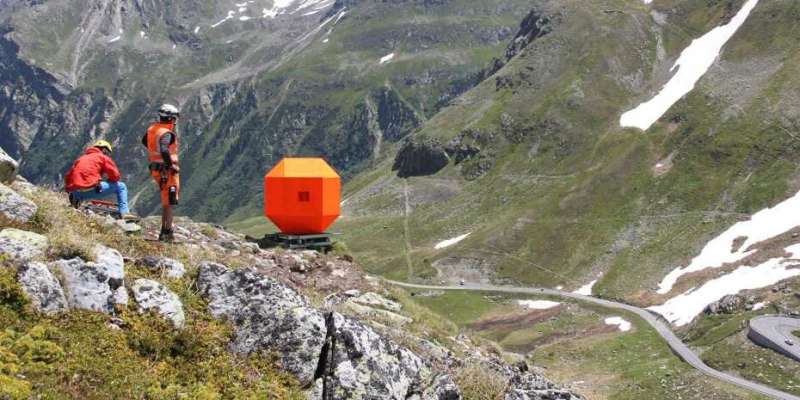Rock shape should be given greater consideration in rockfall risk assessments

The shape of rocks is a key factor in assessing rockfall hazard. This is the conclusion of a new study from the Institute for Snow and Avalanche Research and ETH Zurich.
Rockfall is a very real threat in an Alpine country like Switzerland. In order to assess the hazard at a given location and plan protective measures, engineering firms use computer models to calculate how far falling rocks can roll. However, the models are not yet able to adequately take into account the extent to which the mass, size or shape of a rock influences its movement. This would require real-world measurement data to be fed into the models, but until now such data were only available sporadically, since no systematic rockfall studies had been conducted.
First comprehensive experiments
That has now changed after researchers from the WSL Institute for Snow and Avalanche Research SLF and ETH Zurich spent over four years carrying out rockfall experiments. "This has allowed us to compile the largest set of measurement data to date," says Andrin Caviezel, SLF researcher and lead author of the study. The researchers used artificial rocks in the form of concrete blocks fitted with sensors, which they rolled down a slope near the Flüela Pass in the Swiss canton of Grisons. They compared different shapes and masses, reconstructed the complete trajectories and determined speeds, jump heights and runout zones (see info box). They have just published their results in the scientific journal Nature Communications.
Lateral spread
The most significant finding is that the direction a rock rolls in depends much more on its shape than on its mass. While cube-shaped boulders plunge straight down the line of greatest slope, wheel-shaped rocks often pull away to one side and so may threaten a much wider area at the base of the slope. "This needs to be taken into consideration when assessing danger zones, but also when determining the location and dimensions of rockfall nets," explains Caviezel. Because wheel-like rocks hit rockfall nets with their narrow side, their energy is concentrated on a much smaller area than is the case with cube-like rocks—so protective nets need to be stronger.
More realistic models
The data are now being entered into the RAMMS::ROCKFALL simulation program developed at the SLF. As well as factoring in the shape, the aim is to represent more realistically how the rock's speed is affected by the way it impacts and bounces off the ground. "This will enable us to offer an enhanced program that engineering firms can use to make more reliable calculations," says Caviezel. The data set is also available on the EnviDat platform, where it is freely accessible to other research groups. They can use it to calibrate their own algorithms or to develop new, more accurate models providing enhanced protection against rockfall.
More information: Andrin Caviezel et al, The relevance of rock shape over mass—implications for rockfall hazard assessments, Nature Communications (2021). DOI: 10.1038/s41467-021-25794-y
Journal information: Nature Communications
Provided by ETH Zurich





















